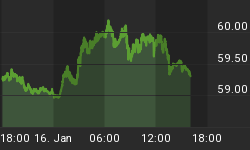Bitcoin miners have become energy hunters, scouring the world for cheap electricity. When most people think about bitcoin mining operations, they imagine hydro-powered warehouses in Canada or the Sichuan Mountains, but what about the oil capital of the United States? What if it were possible to turn otherwise-wasted natural gas into bitcoin?
Texas’ Natural Gas Problem
Growing up in Texas, oil wells were a part of life. Oil prices were high, and we had a ton of it. In my quiet college town, they were everywhere. We even made national headlines as the first city in the country to try and ban fracking (And lost, obviously).
Then came the slump. From 2015-2017, oil fell from over $115 per barrel to under $35. And it wasn’t just the roughnecks and drill-hands that were affected. The drop devastated entire communities in the Lone Star State. It created ghost towns, bankruptcies and worse.
But now, the boom is back.
High oil prices have led to a renaissance in Texas’ Permian Basin. It has become a money machine, churning out six-figure incomes to any able-bodied person willing to put in the long hours and hard manual labor required to pull oil from the ground. The cash is so good, in fact, that drillers are literally burning potential profits.
You see, when oil is pumped. the process creates natural gas as a byproduct. And the lack of infrastructure, in addition to a global gas glut, has made it economically difficult to move or even use the resource. In this scenario, drillers have only two options – reduce production or burn the gas. I’m sure you can guess what they are choosing. Related: America's Trillion Dollar Credit Card Crisis
The process of burning the excess fuel is called flaring. And it has both an environmental and economic impact. Wall Street Journal estimates that over $1 million worth of natural gas is being flared every day, producing greenhouse gases equivalent to approximately 2 million cars, and that’s just in the Permian. Others estimate the numbers could be much greater worldwide. And though permits are required, they are rarely denied. Why would they be? Crude oil production has been a boon to the regional and national economy.
But what if there was a third option? One that would allow drillers to ‘have their gas and use it too.’
Turning Gas Into Bitcoin
Bitcoin’s energy consumption has been covered immensely from every side of the debate. Generally, so the argument goes, bitcoin miners’ carbon footprint is growing exponentially. Though there have been significant efforts made to reduce the environmental toll, from solar farms to hydro-plants, Bitcoin can’t seem to escape this negative stigma.
Some of the most interesting initiatives, however, are those literally turning waste into bitcoin. And the oil industry is ripe for potential in this regard.
Bernstein analysts led by Jean Ann Salisbury noted that the Permian Basin could produce an “astounding 25 bcfd of wet gas [per day] to 2025, which will mostly be treated as a byproduct based on oil price and possibly even flared! What could producers do instead with this free gas?”
Indeed, that’s the million-dollar question.
And unfortunately, it has yet to be answered. In their review, the analysts concluded that, because of increasing mining difficulty, Bitcoin prices would need to be much higher to remain profitable, stating “We make money only if the average price over 15 years is $18,788.”
But that’s not the end of the story. There’s still a problem that needs a solution.
Flare Mining
Oil prices are continuing to climb, and regulators are once again beginning to weigh the true cost of flaring as rig counts rise and the shale boom kicks into overdrive.
The bottlenecks are inevitable, and if regulators do begin to crack down on natural gas flaring, oil production in Texas could slow drastically.
Related: Fed Chair Speech Cost Investors $1.5 Trillion
For drillers, there’s a clear a and present risk in investing in infrastructure to support bitcoin mining, but it’s something that they’re used to. And while the 15-year average needs to hit $18,000 to remain profitable, they’re already losing potential profits by burning natural gas. So, what’s a driller to do?
One company, in particular, is offering a unique plug-and-play solution to this issue. With the understanding that the current path is unsustainable, Flare Mining has built a portable flare gas capture and processing unit which allows drillers to easily turn otherwise wasted gas into bitcoin.
The FlarePods come equipped with everything needed to process excess natural gas, turning it into energy to power mining rigs. Additionally, the pods feature a satellite internet connection which will allow drillers even in the most remote locations to remain connected.
While the FlarePods provide a glimmer of hope for oil producers looking to cut back on their losses, or even profit on their excess gas, there’s still a long way to go before such solutions become commonplace in land of crude oil cowboys.
By Michael Kern via Crypto Insider
More Top Reads From Safehaven.com:

















